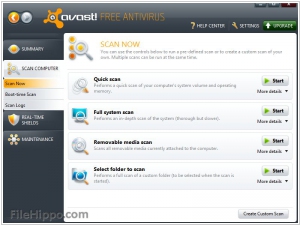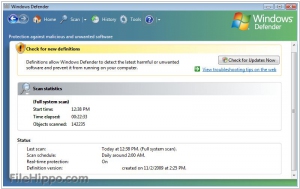Avast vs Microsoft Defender
August 06, 2023 | Author: Michael Stromann
Avast and Microsoft Defender are both popular antivirus software solutions, but they have distinct differences in terms of features, performance, and additional security offerings.
Avast is known for its comprehensive antivirus protection, offering real-time threat detection, malware scanning, and web protection features. It also provides additional security layers such as email scanning, behavior analysis, and a robust firewall. Avast offers a range of plans, including free and paid options, with varying levels of features and protection.
On the other hand, Microsoft Defender, formerly known as Windows Defender, is the default antivirus software included with Windows operating systems. It provides basic antivirus and anti-malware protection, along with real-time scanning and system vulnerability checks. Microsoft Defender is integrated with the Windows Security Center and receives regular updates from Microsoft.
See also: Top 10 Antivirus Software
Avast is known for its comprehensive antivirus protection, offering real-time threat detection, malware scanning, and web protection features. It also provides additional security layers such as email scanning, behavior analysis, and a robust firewall. Avast offers a range of plans, including free and paid options, with varying levels of features and protection.
On the other hand, Microsoft Defender, formerly known as Windows Defender, is the default antivirus software included with Windows operating systems. It provides basic antivirus and anti-malware protection, along with real-time scanning and system vulnerability checks. Microsoft Defender is integrated with the Windows Security Center and receives regular updates from Microsoft.
See also: Top 10 Antivirus Software
Avast vs Microsoft Defender in our news:
2021. Microsoft launches Defender for Business
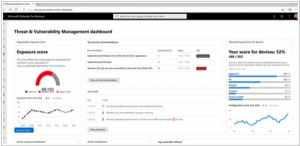
Microsoft has unveiled Microsoft Defender for Business, an innovative and affordable endpoint security solution designed specifically to cater to businesses employing up to 300 individuals. This new offering from Microsoft enhances security measures beyond traditional antivirus systems by providing next-generation protection, endpoint detection and response capabilities, threat and vulnerability management, and more. With simplified configuration and management, along with intelligent and automated investigation and remediation, Defender for Business ensures robust security. It safeguards against a range of cybersecurity threats, including malware and ransomware, across Windows, macOS, iOS, and Android devices. Available as a standalone solution, it can be obtained for a cost of $3 per user per month.
2021. NortonLifeLock and Avast merge in $8.1B deal

U.S. cybersecurity firm NortonLifeLock has recently completed the acquisition of its Czech counterpart, Avast, for a substantial sum of $8.1 billion. This strategic move aims to establish a global powerhouse in consumer security. NortonLifeLock, which emerged as an independent entity from Symantec in 2019, anticipates that the merger will result in an industry-leading consumer cyber safety business, significantly expanding its user base through Avast's impressive customer count of 435 million. With its establishment in 1988, Avast has built a strong reputation in providing cybersecurity software tailored for consumers, small businesses, and medium-sized enterprises, positioning itself as one of the largest security companies in the market. Nonetheless, it is worth noting that Avast has faced some controversy over its nearly 25-year history.
2019. Microsoft Defender comes to Mac
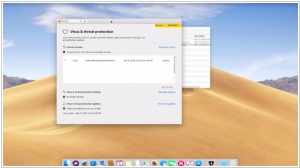
Microsoft Defender Advanced Threat Protection (ATP) will be available for Mac as well. Previously, it served as a Windows solution designed to safeguard the machines of Microsoft 365 subscribers and the assets managed by IT administrators. Formerly known as Windows Defender ATP, Microsoft has decided to drop the "Windows Defender" name since it is now accessible on Mac. Many enterprises utilize a combination of Windows and Mac machines and already equip their employees with Office. By having a security solution that covers both systems, IT departments can significantly simplify their operations, as managing security vulnerabilities on a single system is challenging enough as it is.
2016. Avast Antivirus acquired competitor AVG
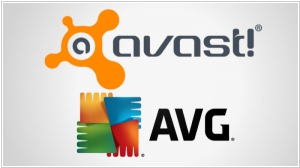
Avast, one of the most popular antivirus applications, has announced its acquisition of AVG Technologies, one of its major competitors, for a cash sum of $1.3 billion. This strategic move will provide Avast with access to a vast user base of over 400 million devices currently employing Avast or AVG's software solutions. Among these users are 250 million PC and Mac users, as well as 160 million mobile users. While the acquisition process will take a few months to complete, users can anticipate enhancements in threat detection efficiency in the near future. Avast will have the opportunity to gather more comprehensive threat data, thereby enhancing user protection across PC, Mac, mobile, and even extending its reach to Internet of Things (IoT) devices. Additionally, Avast will gain access to AVG's Zen mobile technology, which enables the protection of an entire family's devices from a single primary device. This collaboration will also enable the improvement of technical support for business users.
2016. Microsoft released Windows Defender Advanced Threat Protection
WDATP is a cloud service offered by Windows Defender, the built-in antivirus in Windows. Currently, Windows Defender primarily focuses on scanning websites and downloads to prevent hacking attempts. However, in the era of social engineering and spear-phishing, antivirus software needs to adopt a more proactive approach. Windows Defender Advanced Threat Protection (WDATP) aims to address this by shifting its attention from monitoring individual files to observing the overall behavior of a machine. Instead of simply searching for specific viruses, WDATP keeps a close watch on symptoms that indicate potential threats. For instance, if a machine starts establishing connections with unusual ports or executing uncommon PowerShell commands—behavior that deviates from the norm for most users—WDAPT alerts administrators. It provides them with an overview of both current and historical machine behavior for further analysis. Moreover, Microsoft is capitalizing on the extensive Windows user base to jumpstart its antivirus program. By analyzing millions of suspicious files from machines worldwide in the cloud, a vast centralized database is being constructed, encompassing not only malicious files but also malicious behavior.

